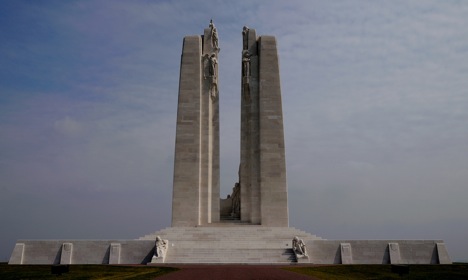
The Canadian National Vimy Memorial is one of the most stunning and profound war memorials in the world. Located in France, it is dedicated to the memory of Canadians killed in the First World War and serves as the place of commemoration for Canadian soldiers killed, or presumed dead, in France that have no known grave.
Designed by Walter Seymour Allward, a Canadian monument sculptor from Toronto, it contains several elements representing various aspects of the war. The monument includes 20 human figures that illustrate the reality of war. The Vimy Memorial took 11 years to build and was unveiled on July 26, 1936.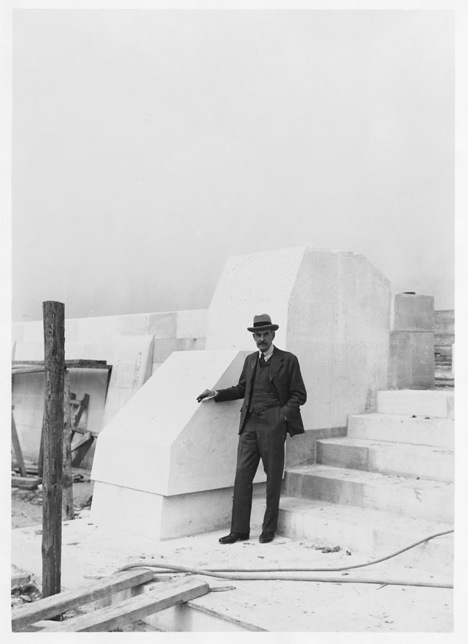
The front wall, typically mistaken for the rear, represents an impenetrable wall of defense. You can see a group of figures at each end of the it, next to the base of the steps, entitled Breaking of the Sword and Sympathy of the Canadians for the Helpless. Collectively, the two groups are The Defenders and represent the ideals for which Canadians gave their lives during the war. There is a cannon barrel draped in laurel and olive branches carved into the wall above each group to symbolize peace.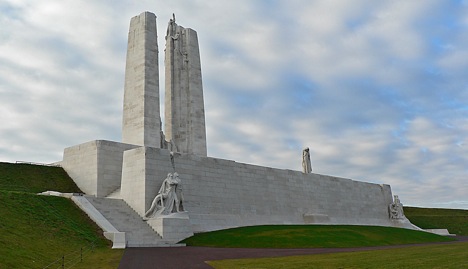
Sympathy of the Canadians for the Helpless
In Sympathy of the Canadians for the Helpless, one man stands erect while three other figures, stricken by hunger or disease, are crouched and kneeling around him. The standing man represents Canada’s sympathy for the weak and oppressed.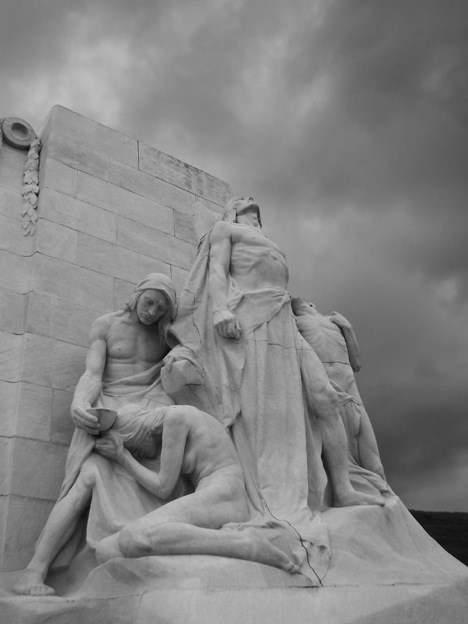
Breaking of the Swords
In Breaking of the Sword, three young men are present, one of whom is crouching and breaking his sword.This statue represents the defeat of militarism and the general desire for peace. This grouping of figures is the most overt image to pacifism in the monument, the breaking of a sword being extremely uncommon in war memorials. It's a very positive image.
Canada Bereft (Mother Canada mourning her dead)
The figure of a cloaked young female stands on top of the front wall and overlooks the Douai Plains. It represents Canada, a young nation mourning her dead.The woman has her head bowed, her eyes cast down, and her chin resting in one hand. Below her at ground level of the former battlefield is a sarcophagus, bearing a Brodie helmet, a sword and draped in laurel branches. The stone sarcophagus represents Canada's war dead. The statue is the largest single piece in the monument and serves as a focal point. It's a very striking statue. I can only imagine what it must feel like to be there. I imagine many people around the world who have experienced war directly on indirectly can relate.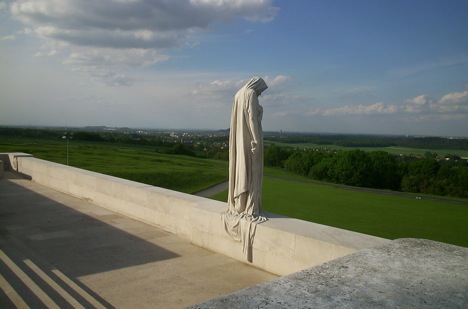
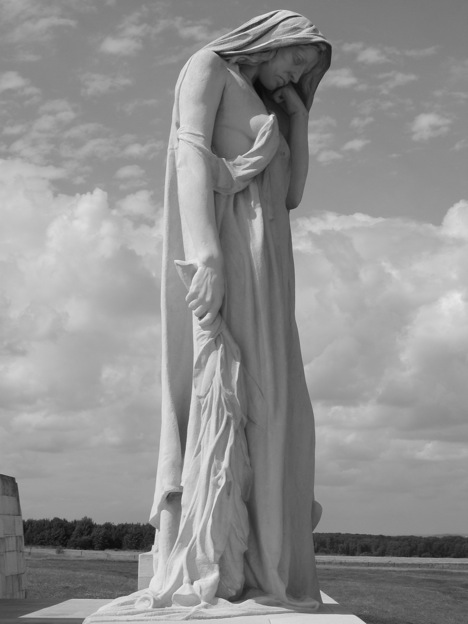
The twin pylons
The twin pylons represent France and Canada as partners in arms. They rise to a height 30 metres above the memorial's stone platform. One of the pylons bears the maple leaf for Canada the other the fleur-de-lys for France. At the top of two pylons is a grouping of figures known collectively as the Chorus.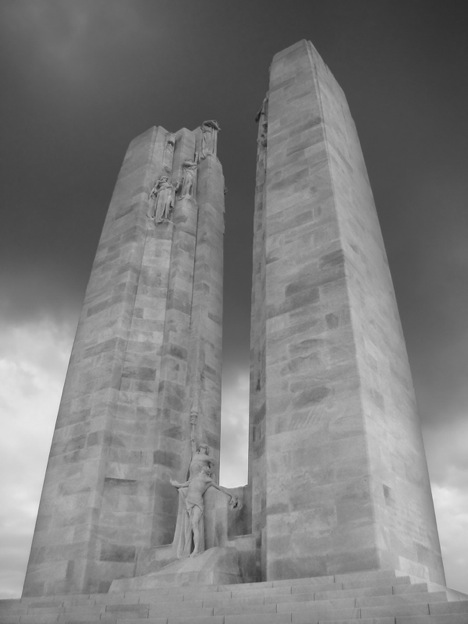
The Chorus
The statues of The Chorus represent various words. The most senior figures represent Justice and Peace. Peace stands with a torch upraised, making it the highest point in the region. BelowJustice and Peace, you can see the figures of Hope, Charity, Honour with the figures of Truth and Knowledge. Around these figures are shields of Canada, Britain and France. Large crosses adorn the outside of each pylon.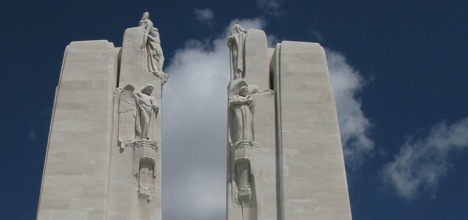
The Spirit of Sacrifice
The Spirit of Sacrifice is located at the base between the two pylons. In the display, a young dying soldier is gazing upward in a crucifixion-like pose, having thrown his torch to a comrade who holds it aloft behind him. The torch is passed from one comrade to another in an effort to keep alive the memory of the war dead.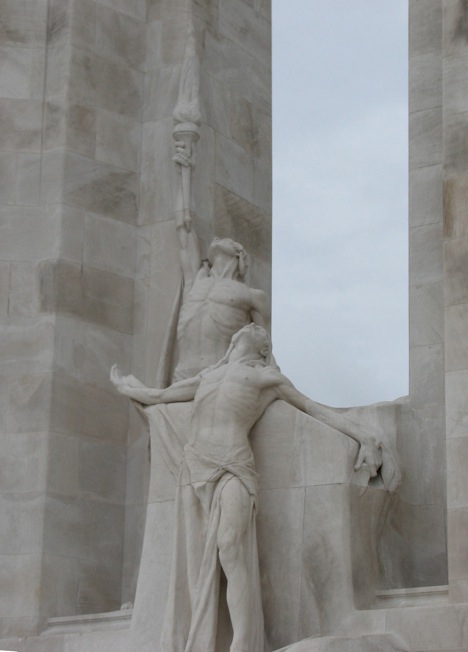
Mourning Parents
The Mourning Parents, one male and one female figure on either side of the steps, are reclining on the reverse side of the monument. They represent the mourning mothers and fathers of the nation.
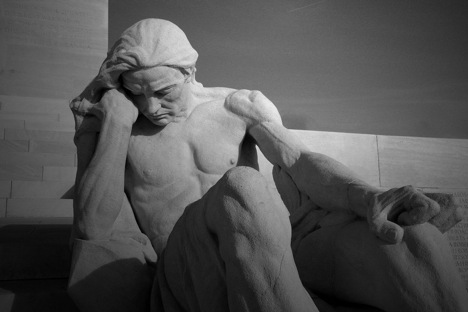
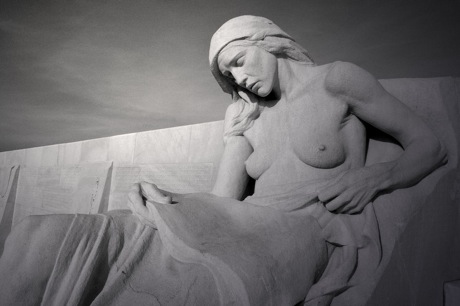
Names of the missing
Inscribed on the outside wall of the monument are the names of the 11,285 Canadians killed in France, and whose final resting place is unknown. Most Commonwealth War Graves Commission memorials present names in a descending list format. Allward sought to present the names as a seamless list and decided to do so by inscribing the names in continuous bands, across both vertical and horizontal seams, around the base of the monument.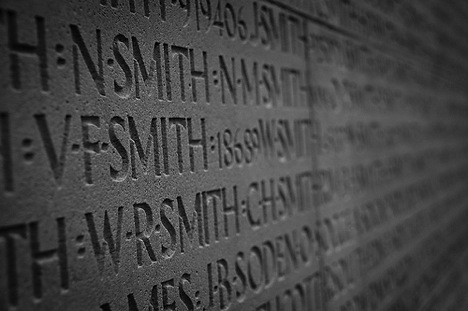

Thank you for such an informative and interesting post. It obviously took a lot of thought and work to create such a moving and important memorial.
ReplyDeleteKelly